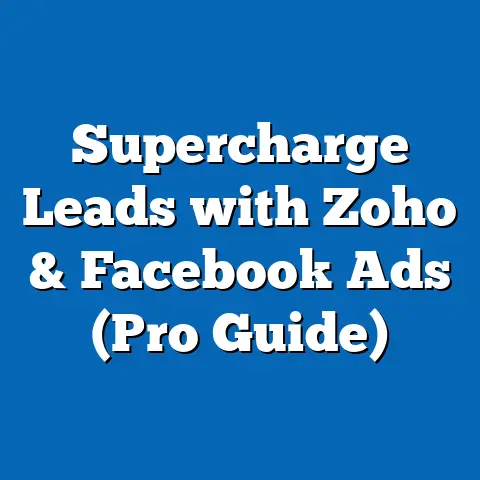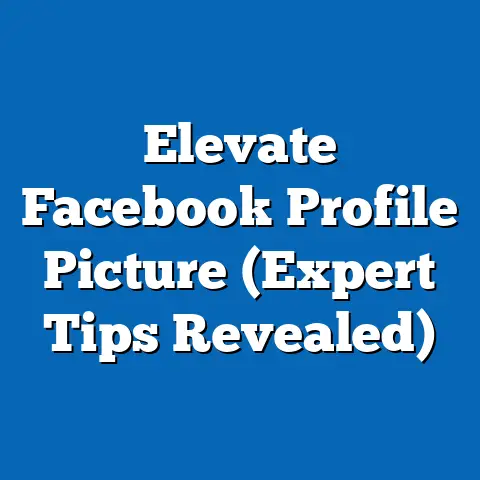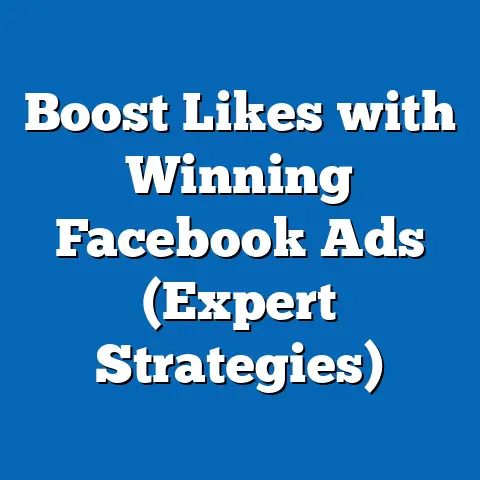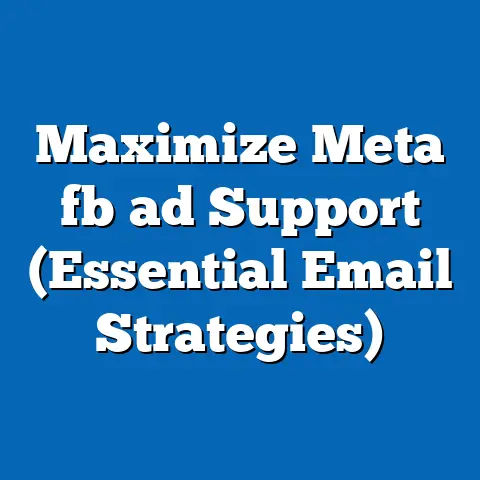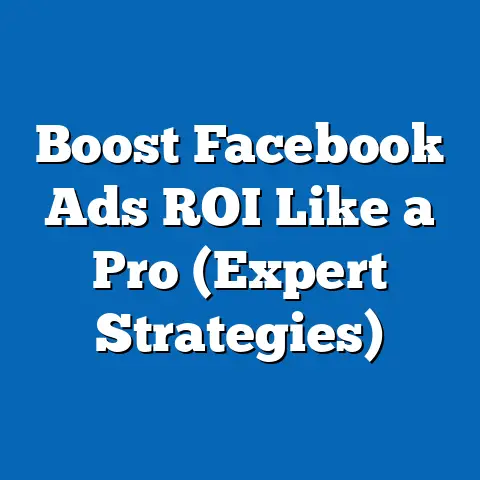Unlocking LTV in Facebook Ads (Maximize ROI)
What if you could turn every dollar you spend on Facebook ads into three, five, or even ten dollars in return? I remember when I first started running Facebook ads, I was so focused on just getting clicks and conversions that I completely ignored the bigger picture. I’d celebrate a successful campaign based solely on the initial sale, without considering whether that customer would ever buy from me again. Imagine the impact on your business if you could not only acquire new customers but also keep them engaged, leading to repeat purchases and long-term loyalty. This is the promise of unlocking Lifetime Value (LTV) in your Facebook advertising strategy, and it’s something I wish I’d understood from day one.
Understanding Lifetime Value (LTV) and how it plays a critical role in maximizing ROI for businesses leveraging Facebook ads is the key to sustainable growth. It’s not just about acquiring customers; it’s about cultivating relationships that lead to long-term profitability. In this guide, I’m going to share everything I’ve learned about using Facebook ads to attract and retain high-value customers, turning them into loyal advocates for your brand.
Understanding Lifetime Value (LTV)
What is Lifetime Value (LTV)?
Lifetime Value (LTV) represents the total revenue a business can expect to generate from a single customer throughout their entire relationship with the company. It’s a predictive metric that estimates the net profit attributed to the entire future relationship with a customer. Unlike focusing solely on the immediate return on ad spend (ROAS), LTV considers the long-term value a customer brings, making it a crucial metric for strategic decision-making.
I like to think of LTV as the “big picture” of customer relationships. It’s not just about the first sale; it’s about all the sales, referrals, and positive word-of-mouth that a customer generates over time.
Why is LTV Important?
Understanding LTV is critical for several reasons:
- Informed Budget Allocation: Knowing the LTV of your customers allows you to make more informed decisions about how much to spend on acquiring new customers. You might be willing to spend more to acquire a customer with a high LTV, knowing that they will generate significant revenue over time.
- Improved Targeting: By identifying the characteristics of your high-LTV customers, you can refine your targeting on Facebook to reach more people like them. This leads to more efficient ad spend and higher ROI.
- Enhanced Customer Retention: Understanding LTV helps you prioritize customer retention efforts. By focusing on keeping your high-value customers happy, you can increase their lifespan and, consequently, their LTV.
- Strategic Decision Making: LTV provides valuable insights for product development, pricing strategies, and overall business planning. It helps you understand what your customers value most and how to best serve their needs.
- Sustainable Growth: Ultimately, focusing on LTV leads to more sustainable and profitable growth. By building long-term relationships with your customers, you create a loyal customer base that will continue to generate revenue for years to come.
Calculating LTV: Key Metrics
Calculating LTV can seem daunting, but it’s a straightforward process once you understand the key metrics involved. Here are some of the most important factors to consider:
-
Average Purchase Value (APV): This is the average amount of money a customer spends per purchase. To calculate APV, divide the total revenue generated over a specific period by the number of purchases made during that period.
- Example: If your business generates $10,000 in revenue from 500 purchases in a month, your APV is $20.
-
Purchase Frequency (PF): This is the average number of times a customer makes a purchase within a specific period. To calculate PF, divide the total number of purchases by the number of unique customers.
-
Example: If you have 200 unique customers who made a total of 500 purchases in a month, your PF is 2.5.
-
Customer Lifespan (CL): This is the average length of time a customer remains a customer. This can be measured in months or years. Determining CL can be tricky, especially for new businesses. You can estimate it based on industry averages or by analyzing historical data.
-
Example: If your average customer stays with you for 3 years (36 months), your CL is 36.
-
Customer Value (CV): This is calculated by multiplying APV by PF. It represents the total revenue generated by a customer within a specific period.
-
Example: If your APV is $20 and your PF is 2.5, your CV is $50.
-
Average Gross Margin (AGM): This is the percentage of revenue remaining after deducting the cost of goods sold (COGS). It represents the profitability of each sale.
-
Example: If your revenue is $100 and your COGS is $60, your gross margin is $40, or 40%.
Average Purchase Value (APV): This is the average amount of money a customer spends per purchase. To calculate APV, divide the total revenue generated over a specific period by the number of purchases made during that period.
- Example: If your business generates $10,000 in revenue from 500 purchases in a month, your APV is $20.
-
Purchase Frequency (PF): This is the average number of times a customer makes a purchase within a specific period. To calculate PF, divide the total number of purchases by the number of unique customers.
-
Example: If you have 200 unique customers who made a total of 500 purchases in a month, your PF is 2.5.
-
Customer Lifespan (CL): This is the average length of time a customer remains a customer. This can be measured in months or years. Determining CL can be tricky, especially for new businesses. You can estimate it based on industry averages or by analyzing historical data.
-
Example: If your average customer stays with you for 3 years (36 months), your CL is 36.
-
Customer Value (CV): This is calculated by multiplying APV by PF. It represents the total revenue generated by a customer within a specific period.
-
Example: If your APV is $20 and your PF is 2.5, your CV is $50.
-
Average Gross Margin (AGM): This is the percentage of revenue remaining after deducting the cost of goods sold (COGS). It represents the profitability of each sale.
-
Example: If your revenue is $100 and your COGS is $60, your gross margin is $40, or 40%.
Purchase Frequency (PF): This is the average number of times a customer makes a purchase within a specific period. To calculate PF, divide the total number of purchases by the number of unique customers.
Example: If you have 200 unique customers who made a total of 500 purchases in a month, your PF is 2.5.
Customer Lifespan (CL): This is the average length of time a customer remains a customer. This can be measured in months or years. Determining CL can be tricky, especially for new businesses. You can estimate it based on industry averages or by analyzing historical data.
Example: If your average customer stays with you for 3 years (36 months), your CL is 36.
Customer Value (CV): This is calculated by multiplying APV by PF. It represents the total revenue generated by a customer within a specific period.
Example: If your APV is $20 and your PF is 2.5, your CV is $50.
Average Gross Margin (AGM): This is the percentage of revenue remaining after deducting the cost of goods sold (COGS). It represents the profitability of each sale.
Example: If your revenue is $100 and your COGS is $60, your gross margin is $40, or 40%.
Simple LTV Formula:
A basic formula for calculating LTV is:
LTV = CV * CL * AGM
Using the examples above:
LTV = $50 * 36 * 40% = $720
This means that, on average, each customer is expected to generate $720 in profit over their lifetime.
Important Note: This is a simplified formula. More complex LTV calculations may include factors like customer acquisition cost (CAC), discount rates, and retention rates.
LTV Across Industries: Some Examples
LTV can vary significantly across different industries. Here are a few examples:
- Subscription-Based Businesses (e.g., SaaS): These businesses often have high LTVs because customers pay recurring fees over a long period. The key is to minimize churn and keep customers subscribed.
- E-commerce Businesses: LTV in e-commerce depends on factors like product quality, customer service, and brand loyalty. Businesses can increase LTV by encouraging repeat purchases and offering personalized recommendations.
- Service-Based Businesses (e.g., Consulting): LTV in service-based businesses depends on the duration of the service engagement and the value provided. Building strong relationships and delivering exceptional results can lead to repeat business and referrals.
- Restaurants and Cafes: LTV in the food and beverage industry depends on factors like location, menu quality, and customer experience. Encouraging repeat visits through loyalty programs and promotions can significantly increase LTV.
Takeaway: Understanding LTV is essential for making informed decisions about your Facebook advertising strategy. By calculating LTV and analyzing the factors that influence it, you can optimize your campaigns to attract and retain high-value customers.
Next Step: Calculate the LTV for your own business. Gather the necessary data and use the formula provided to get a sense of the long-term value of your customers.
The Connection Between LTV and Facebook Ads
Tailoring Facebook Ads to Target High-LTV Customers
Facebook ads offer a powerful way to target customers based on their predicted LTV. By leveraging Facebook’s advanced targeting capabilities, you can reach the people who are most likely to become loyal, high-value customers.
I’ve found that the key to success is to think beyond basic demographics and interests. Instead, focus on identifying the behaviors, attitudes, and values that are characteristic of your high-LTV customers.
The Importance of Audience Segmentation
Audience segmentation is crucial for tailoring your Facebook ads to target high-LTV customers. Instead of treating all customers the same, you need to divide them into distinct groups based on their characteristics and behaviors.
Here are some common segmentation strategies:
- Demographic Segmentation: This involves segmenting customers based on factors like age, gender, location, education, and income.
- Interest-Based Segmentation: This involves segmenting customers based on their interests, hobbies, and passions. Facebook allows you to target people based on the pages they like, the groups they belong to, and the topics they engage with.
- Behavioral Segmentation: This involves segmenting customers based on their online behavior, such as their purchase history, website visits, and engagement with your brand.
- Psychographic Segmentation: This involves segmenting customers based on their values, attitudes, and lifestyles. This type of segmentation can be more challenging, but it can also be incredibly powerful.
By combining these different segmentation strategies, you can create highly targeted audiences that are more likely to convert into high-LTV customers.
Targeting High-LTV Customers: Specific Strategies
Here are some specific strategies for targeting high-LTV customers on Facebook:
- Custom Audiences: Create custom audiences based on your existing customer data. Upload your customer list to Facebook and target ads specifically to those people. This is a great way to reach your existing high-LTV customers and encourage them to make repeat purchases.
- Lookalike Audiences: Create lookalike audiences based on your high-LTV customers. Facebook will identify people who share similar characteristics and behaviors with your best customers. This is a great way to reach new prospects who are likely to become high-LTV customers.
- Website Custom Audiences: Create website custom audiences based on the pages people have visited on your website. Target ads to people who have visited your product pages, viewed your pricing, or added items to their cart but haven’t completed the purchase.
- Engagement Custom Audiences: Create engagement custom audiences based on people who have interacted with your Facebook page or ads. Target ads to people who have liked your page, commented on your posts, or watched your videos.
- Value-Based Lookalike Audiences: This is an advanced strategy that involves uploading your customer data to Facebook along with the LTV of each customer. Facebook will then create a lookalike audience based on the people with the highest LTV. This is a highly effective way to target new prospects who are likely to become high-value customers.
Statistics and Case Studies
Studies have shown that businesses that focus on LTV-based targeting see a significant increase in ROI. For example, a study by Bain & Company found that increasing customer retention rates by 5% can increase profits by 25% to 95%.
I’ve personally seen the impact of LTV-based targeting in my own campaigns. By focusing on acquiring and retaining high-value customers, I’ve been able to significantly increase my ROI and drive sustainable growth.
Takeaway: Facebook ads can be a powerful tool for targeting high-LTV customers. By leveraging audience segmentation and advanced targeting strategies, you can reach the people who are most likely to become loyal, high-value customers.
Next Step: Review your existing customer data and identify the characteristics of your high-LTV customers. Use this information to create targeted audiences on Facebook.
Strategies for Unlocking LTV in Facebook Ads
3.1 Retargeting Campaigns
Retargeting is a powerful strategy for recapturing potential customers and enhancing their LTV. It involves showing ads to people who have previously interacted with your brand, such as visiting your website, viewing your products, or adding items to their cart.
I’ve found that retargeting campaigns are particularly effective for increasing LTV because they allow you to re-engage customers who have already shown interest in your products or services.
How Retargeting Works:
- Install the Facebook Pixel: The Facebook Pixel is a small piece of code that you place on your website. It tracks the actions that people take on your site, such as visiting pages, viewing products, and making purchases.
- Create Custom Audiences: Use the Facebook Pixel to create custom audiences based on the actions people have taken on your website. For example, you can create an audience of people who have visited your product pages but haven’t completed the purchase.
- Show Targeted Ads: Show targeted ads to these custom audiences. Use compelling ad copy and visuals to re-engage them and encourage them to take the next step.
Retargeting Strategies for Increasing LTV:
- Product-Specific Retargeting: Show ads for the specific products that people have viewed on your website. This is a highly effective way to re-engage customers who are already interested in your products.
- Cart Abandonment Retargeting: Show ads to people who have added items to their cart but haven’t completed the purchase. Offer them a discount or free shipping to encourage them to complete the purchase.
- Upselling and Cross-Selling Retargeting: Show ads for related products or services to people who have already made a purchase. This is a great way to increase the average order value and enhance their LTV.
3.2 Upselling and Cross-Selling
Upselling and cross-selling are powerful techniques for maximizing each customer’s value. Upselling involves encouraging customers to purchase a higher-end version of a product or service, while cross-selling involves encouraging customers to purchase related products or services.
I’ve found that upselling and cross-selling can be particularly effective for increasing LTV when done strategically.
Upselling and Cross-Selling Strategies for Facebook Ads:
- Product Recommendations: Use product recommendations in your Facebook ads to suggest related products or services that customers might be interested in.
- Bundled Offers: Create bundled offers that combine multiple products or services at a discounted price. This is a great way to encourage customers to purchase more items and increase their LTV.
- Limited-Time Offers: Offer limited-time discounts or promotions to encourage customers to make a purchase. This creates a sense of urgency and motivates them to take action.
- Value-Added Services: Promote value-added services, such as extended warranties, premium support, or personalized training, to encourage customers to upgrade their purchase.
3.3 CRM Integration
Integrating your Customer Relationship Management (CRM) data with your Facebook ad campaigns is crucial for refining targeting and personalization. Your CRM contains valuable information about your customers, such as their purchase history, demographics, and engagement with your brand.
I’ve found that CRM integration allows you to create more targeted and personalized ads that are more likely to resonate with your customers.
Benefits of CRM Integration:
- Improved Targeting: Use your CRM data to create custom audiences on Facebook. This allows you to target ads specifically to your existing customers, based on their demographics, purchase history, and engagement with your brand.
- Personalized Ads: Use your CRM data to personalize your Facebook ads. This can include using their name in the ad copy, showing them products they’ve previously purchased, or offering them personalized discounts.
- Enhanced LTV Tracking: Track the LTV of your customers in your CRM and use this data to optimize your Facebook ad campaigns. This allows you to focus on acquiring and retaining high-value customers.
3.4 Leveraging Lookalike Audiences
Creating lookalike audiences based on your high-LTV customers is a powerful way to acquire similar prospects. Facebook will analyze the characteristics and behaviors of your high-LTV customers and identify other people who share similar traits.
I’ve found that lookalike audiences can be incredibly effective for reaching new prospects who are likely to become high-value customers.
How to Create Lookalike Audiences:
- Create a Custom Audience: Start by creating a custom audience based on your high-LTV customers.
- Create a Lookalike Audience: In the Facebook Ads Manager, select the option to create a lookalike audience based on your custom audience.
- Choose Your Location: Choose the location you want to target with your lookalike audience.
- Select Your Audience Size: Select the size of your lookalike audience. A smaller audience will be more targeted, while a larger audience will have a broader reach.
Takeaway: By implementing these strategies, you can unlock the full potential of Facebook ads and drive sustainable growth by attracting and retaining high-value customers.
Next Step: Implement retargeting campaigns, explore upselling and cross-selling opportunities, integrate your CRM data, and create lookalike audiences based on your high-LTV customers.
Measuring and Analyzing LTV Through Facebook Ads
Tools and Metrics in Facebook Ads Manager
Facebook Ads Manager provides a range of tools and metrics to track the performance of LTV-focused campaigns. Understanding these metrics is crucial for optimizing your ads and ensuring that you’re successfully driving high-LTV customers.
I’ve found that regularly monitoring these metrics allows me to make data-driven decisions and improve the performance of my campaigns.
Key Metrics to Track:
- Cost Per Acquisition (CPA): This metric measures the cost of acquiring a new customer through your Facebook ads. It’s calculated by dividing the total ad spend by the number of new customers acquired.
- Return on Ad Spend (ROAS): This metric measures the revenue generated for every dollar spent on Facebook ads. It’s calculated by dividing the total revenue generated by the total ad spend.
- Conversion Rate: This metric measures the percentage of people who take a desired action after seeing your ad, such as making a purchase, signing up for a newsletter, or filling out a form.
- Customer Lifetime Value (LTV): While Facebook doesn’t directly calculate LTV, you can track it by integrating your CRM data with Facebook Ads Manager. This allows you to see the LTV of the customers you’ve acquired through your Facebook ads.
- Retention Rate: This metric measures the percentage of customers who continue to do business with you over a specific period. It’s a crucial indicator of customer loyalty and LTV.
Setting Up Conversion Tracking and Pixel Implementation
Setting up conversion tracking and pixel implementation is essential for collecting data on customer behavior and measuring the success of your LTV-focused campaigns.
I’ve found that proper conversion tracking allows me to see which ads are driving the most valuable customers and optimize my campaigns accordingly.
How to Set Up Conversion Tracking:
- Create a Facebook Pixel: If you haven’t already, create a Facebook Pixel in the Ads Manager.
- Install the Pixel on Your Website: Place the Facebook Pixel code on every page of your website.
- Set Up Conversion Events: Define the conversion events you want to track, such as purchases, sign-ups, and form submissions.
- Test Your Implementation: Test your conversion tracking to ensure that it’s working properly.
Analyzing Data to Determine if Ads are Driving High-LTV Customers
Analyzing the data collected through conversion tracking and CRM integration is crucial for determining if your ads are successfully driving high-LTV customers.
I’ve found that regular data analysis allows me to identify trends, patterns, and insights that inform my ad optimization strategies.
Data Analysis Strategies:
- Segment Your Data: Segment your data by demographics, interests, and behaviors to identify the characteristics of your high-LTV customers.
- Track LTV by Ad Campaign: Track the LTV of customers acquired through each of your Facebook ad campaigns. This allows you to see which campaigns are driving the most valuable customers.
- Analyze Conversion Paths: Analyze the paths that customers take before converting to identify the touchpoints that are most influential.
- A/B Test Your Ads: A/B test different ad copy, visuals, and targeting options to see what resonates best with your high-LTV customers.
Takeaway: Measuring and analyzing LTV through Facebook ads is essential for optimizing your campaigns and driving sustainable growth. By tracking the right metrics, setting up proper conversion tracking, and analyzing your data, you can ensure that your ads are successfully driving high-value customers.
Next Step: Set up conversion tracking on your website, integrate your CRM data with Facebook Ads Manager, and start tracking the LTV of customers acquired through your Facebook ads.
Real-Life Case Studies
Let’s dive into some real-life examples of businesses that have successfully unlocked LTV through their Facebook ads strategy. I always find that seeing how others have achieved success is incredibly inspiring and provides valuable insights that can be applied to my own campaigns.
Case Study 1: Subscription Box Company
Business: A subscription box company selling curated products for pet owners.
Challenge: The company was struggling to retain customers after the initial subscription period. They needed to find a way to increase customer loyalty and LTV.
Strategy:
- CRM Integration: They integrated their CRM data with Facebook Ads Manager to track customer purchase history and engagement.
- Targeted Retargeting: They created targeted retargeting campaigns based on customer purchase history. For example, customers who had purchased a dog-themed box were shown ads for cat-themed boxes.
- Personalized Offers: They personalized their ads with customer names and offered exclusive discounts to loyal subscribers.
- Loyalty Program Promotion: They promoted their loyalty program through Facebook ads, encouraging customers to earn points for repeat purchases and referrals.
Results:
- Increased customer retention rate by 15%.
- Increased average order value by 10%.
- Increased LTV by 20%.
Key Takeaways:
- CRM integration is crucial for personalizing ads and targeting customers based on their purchase history.
- Targeted retargeting can effectively re-engage customers and encourage them to make repeat purchases.
- Promoting loyalty programs through Facebook ads can incentivize customers to stay loyal and increase their LTV.
Case Study 2: E-commerce Fashion Retailer
Business: An e-commerce fashion retailer selling clothing and accessories.
Challenge: The retailer was facing high customer acquisition costs and needed to find a way to increase LTV to improve ROI.
Strategy:
- Value-Based Lookalike Audiences: They created value-based lookalike audiences based on their high-LTV customers.
- Product Recommendation Ads: They used product recommendation ads to suggest related items to customers based on their browsing history.
- Abandoned Cart Retargeting: They implemented abandoned cart retargeting campaigns, offering discounts to customers who had added items to their cart but hadn’t completed the purchase.
- Post-Purchase Surveys: They sent post-purchase surveys to gather feedback from customers and identify areas for improvement.
Results:
- Decreased customer acquisition cost by 10%.
- Increased average order value by 12%.
- Increased LTV by 25%.
Key Takeaways:
- Value-based lookalike audiences can effectively target new prospects who are likely to become high-LTV customers.
- Product recommendation ads can encourage customers to purchase more items and increase their average order value.
- Abandoned cart retargeting can recover lost sales and improve conversion rates.
- Post-purchase surveys can provide valuable insights for improving customer experience and increasing LTV.
Case Study 3: Online Education Platform
Business: An online education platform offering courses and certifications.
Challenge: The platform needed to increase student enrollment and retention to improve profitability.
Strategy:
- Lead Generation Campaigns: They created lead generation campaigns on Facebook to capture leads from potential students.
- Personalized Onboarding: They personalized the onboarding experience for new students based on their interests and goals.
- Community Building: They created a Facebook group for students to connect with each other, share their experiences, and ask questions.
- Upselling and Cross-Selling: They offered upsell opportunities to students who had completed a course, encouraging them to enroll in more advanced courses or certifications.
Results:
- Increased student enrollment by 20%.
- Increased student retention rate by 15%.
- Increased LTV by 30%.
Key Takeaways:
- Lead generation campaigns can effectively capture leads from potential customers.
- Personalized onboarding can improve customer engagement and retention.
- Community building can foster a sense of belonging and encourage customers to stay loyal.
- Upselling and cross-selling can increase average order value and LTV.
Takeaway: These case studies demonstrate the power of Facebook ads for unlocking LTV. By implementing the strategies discussed, you can attract and retain high-value customers, improve ROI, and drive sustainable growth.
Next Step: Analyze these case studies and identify the strategies that are most relevant to your business. Implement these strategies in your own Facebook ad campaigns and track your results.
Conclusion
Unlocking LTV in Facebook ads is not just about getting more sales; it’s about building lasting relationships with your customers. By understanding the value of each customer over their entire relationship with your business, you can make smarter decisions about your ad spend, targeting, and customer retention efforts.
Remember the key strategies we’ve discussed:
- Understanding LTV: Calculate and analyze the LTV of your customers to inform your ad strategy.
- Targeting High-LTV Customers: Use audience segmentation and advanced targeting strategies to reach the people who are most likely to become loyal, high-value customers.
- Retargeting: Re-engage potential customers and enhance their LTV with targeted retargeting campaigns.
- Upselling and Cross-Selling: Maximize each customer’s value by offering related products or services.
- CRM Integration: Refine targeting and personalization by integrating your CRM data with Facebook ad campaigns.
- Lookalike Audiences: Acquire similar prospects by creating lookalike audiences based on your high-LTV customers.
- Measuring and Analyzing: Track the performance of your LTV-focused campaigns using the tools and metrics available in Facebook Ads Manager.
By implementing these strategies, you can unlock the full potential of Facebook ads and drive sustainable growth by attracting and retaining high-value customers.
Call to Action
Now it’s your turn! I’d love to hear about your experiences with Facebook ads and LTV. What strategies have you found to be most effective? What challenges have you faced? Share your thoughts and insights in the comments section below. Let’s learn from each other and help everyone unlock the power of LTV in Facebook ads!

